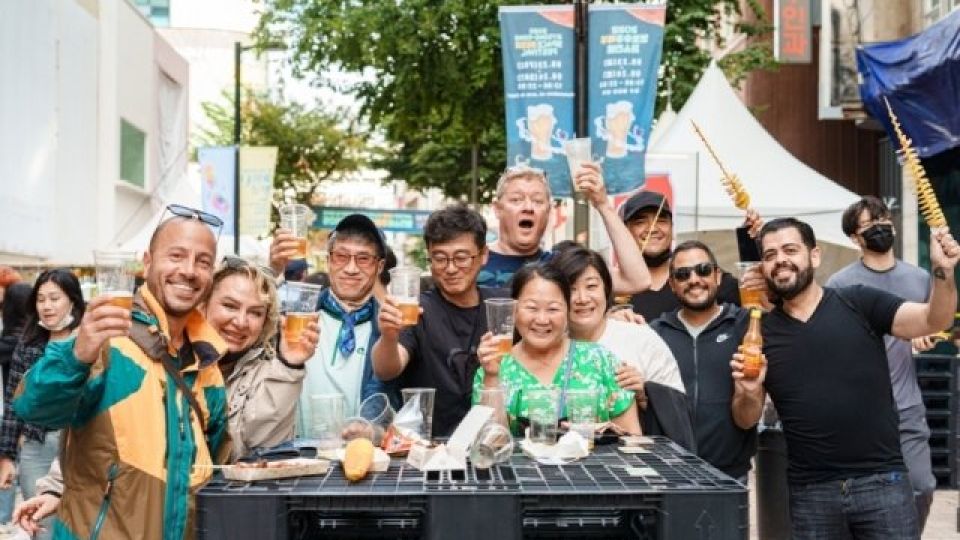September 11, 2024
SEOUL – With the growing trend of beer festivals across Seoul, many districts are joining the movement, with Seorim Happiness Beer Festival in Gwanak-gu and Baekmaek Festival in Gangbuk-gu having concluded their two-day events on Saturday. By the end of this year, over half of Seoul’s 25 districts will have hosted or sponsored beer festivals, reflecting a wider city initiative to boost nightlife and promote local food culture.
While beer festivals have long been popular in regions with cultural ties to imbibing — such as the Namhae German Village Oktoberfest in South Gyeongsang Province or the Daegu Chimaek Festival, celebrating the city’s fried chicken and beer culture — the surge of district-hosted beer festivals in Seoul is a relatively new phenomenon.
The rise of these events is part of a broader initiative by the Seoul Metropolitan Government in 2024 to promote nightlife and food culture across the city.
Earlier this year, the government invited applications for support of lesser-known commercial areas, aiming to promote traditional markets, stores and restaurants not only to tourists, but also to young locals who tend to frequent trendy, Instagram-worthy spots.
“Where there is delicious food, there is always good alcohol. And beer is a drink enjoyed by many Koreans at night, especially with fried chicken and other dishes. Visitors can not only drink beer from popular franchises, but also taste craft beer from local breweries at relatively low prices, or even for free,” said an official from the Seoul Metropolitan Government’s Citizen’s Livelihood and Labor Bureau on Thursday.
“We felt that the beer festival has the power to beckon the young visitors, showcase the charms of local commercial districts featuring the traditional markets, offer delicious food to have them to visit the nearby areas once again which will ultimately revitalize these places,” the official said, explaining the recent increase in district-organized beer festivals across the city.
Asked if the city government plans to introduce other types of events to promote nightlife and food culture, the official said no other types of festivals are currently in the works.
Despite the growing number of beer festivals, not all attendees are fully satisfied with the current offerings. Some feel improvements are needed to create a truly festive atmosphere.
“I can see there are many venues offering beer, but I personally find this beer festival a new version of the five-day market. It is too small to call itself a ‘festival’ compared to those being held in Daegu and Incheon,” said a Gwanak-gu resident surnamed Lee, who was attending the Seorim Happiness Beer Festival on Saturday.
Traditional five-day markets in Korea operate on the second, seventh, 12th and 17th of each month, bringing together vendors selling agricultural products, manufactured goods, food and more.
“I hope the festival expands beyond a single narrow alley so visitors can enjoy a more festive atmosphere for longer,” Lee added.
Another festivalgoer, Park Jae-hoon, who was visiting the Gwanak-gu beer festival with his family, suggested the events could benefit from more interactive activities.
“I’ve attended three beer festivals in Seoul, including those in Dongjak-gu and Gwanak-gu, and they all felt the same. There’s beer, food stalls and a stage for concerts, but adding more hands-on activities could make the events more enjoyable for beer enthusiasts,” Park said.


